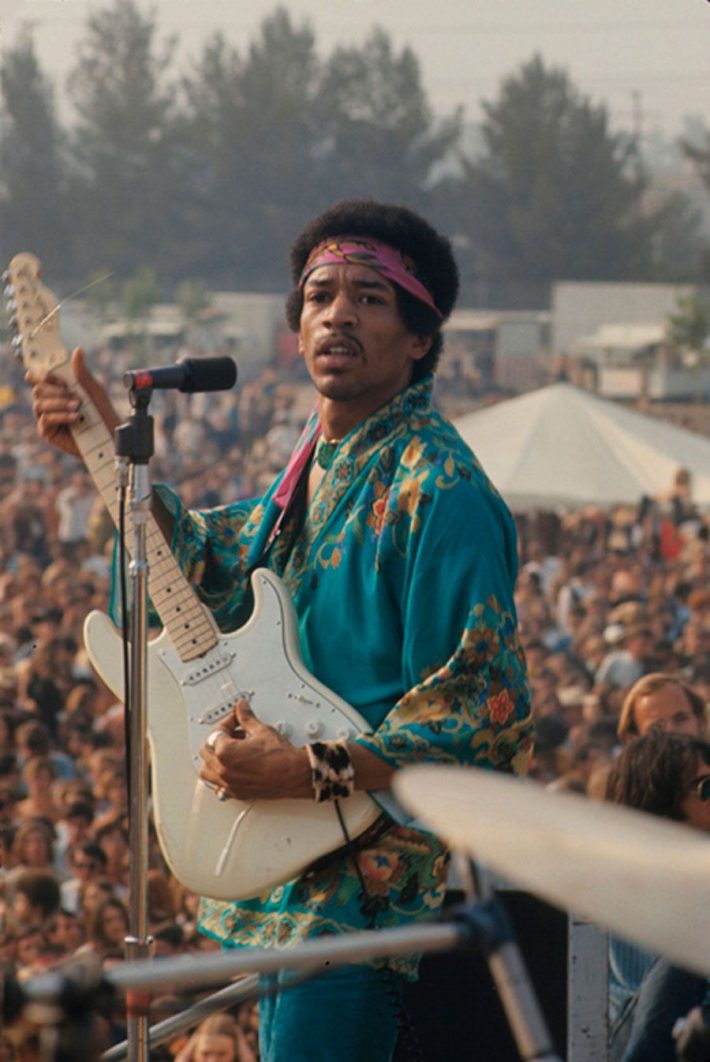On August 18th, 1969, on a small farm in Bethel, New York, Jimi Hendrix took the stage at 9:00 AM for his performance at the Woodstock music festival. During this two hour long set, he played the Star Spangled Banner, a performance that was simultaneously jaw-dropping, powerful, and infuriating to much of America. Here you had a half black, half Cherokee rock star, playing a long instrumental version of the national anthem, using guitar feedback to get the sound effects of the “bombs bursting in air”.
Jimi never admitted it was a protest. However, due to this taking place during the height of the Vietnam War, it’s hard to see it as anything else. Particularly when you view it in the realm of other songs in Hendrix’s ouvre: Machine Gun, 1983 (A Merman I Should Turn To Be), House Burning Down, Izabella… Jimi was an anti-war, lefty pacifist who believed that politicians are all corrupt and are so used to telling lies that they don’t even know what the truth is anymore. He felt that if any major change would bring about peace in the world, it would happen through the power of music, since music is what brings people together. Idealistic and hippy dippy on the music bringing everyone together thing? Sure. But that’s who Jimi was. An optimist at heart with a hatred of war and the suffering of his fellow man, who was trying to think outside the box for ways to help rise above the hate and violence and bring peace and unity.
Jimi faced some severe consequences for this performance. He and his band were greeted with death threats if they were to perform the anthem at certain venues. But when he was interviewed on Dick Cavett several months after Woodstock, he simply couldn’t understand the outrage over his performance. He thought it was beautiful. And he was right! There’s never been a better version of that interminable, difficult to sing song with highly racist, pro-slavery messaging once you get past the first verse.
Today, people hear that version of the anthem and are astounded by its innovation and Jimi’s je ne sai quois. It’s hailed as one of the greatest performances in the history of rock and roll, and it’s not hard to see why. He took that song, turned it on it’s head, and essentially destroyed anyone else performing it in the process. Jimi’s version is the ultimate version, and no matter what vocal gymnastics one may perform, they will never top the ingenuity of the Woodstock version. Despite his tragically short life and career, performances like that and his studio albums are why people do not hesitate to refer to Hendrix as the greatest guitarist of all time. But let’s not forget that Jimi, a former service member himself, went through a lot of hell just for having the guts to perform that song. The way we look at it now is the opposite of how it was perceived in late 1969.
I can only hope protests of today, whether they’re taking a knee during the national anthem to support Black Lives Matter, or clashes with the Proud Boys, White Nationalists and their ilk, are viewed decades later the way we view Jimi’s performance at Woodstock. While his protest was performance art, it struck a nerve. And that nerve it struck is now iconic and one of the backbones of rock and roll. If only Jimi were alive today to see how the song that threatened his life and career is now revered and beloved by guitar nerds, hippies, weirdos, freaks, middle America and most people in between.
